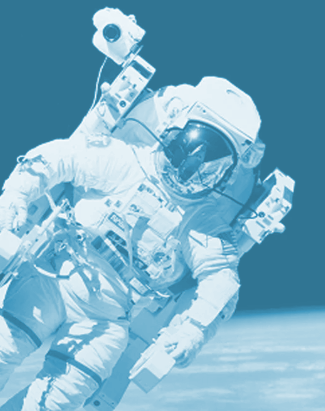Astronaut issues land on lungs
 One of the biggest occupational hazards for astronauts may seem mundane from our Earth-bound perspective - dust.
One of the biggest occupational hazards for astronauts may seem mundane from our Earth-bound perspective - dust.
Human lungs have proven to be remarkably adaptable to life in space, but they are still at risk of dust-related issues.
Professor G Kim Prisk, from the University of California, San Diego, is widely regarded as a global specialist in lung function in zero gravity. He has worked with NASA personnel who have spent time in both the space shuttle program and on board the International Space Station (ISS).
He says spaceflight presents a range of physiological challenges, including the absence of gravity, radiation exposure, isolation, and a prolonged period in a confined environment.
He says that generally the human lung can recover quickly from and adapt to most of those challenges.
“While there are changes in lung function in partial or zero gravity, the lung continues to function well in this novel environment,” Dr Prisk says.
“There is limited evidence to suggest that the water content of the lung … may be slightly elevated in zero gravity.
“This does not seem to produce any impairment in gas exchange, and while it might be hypothesised that this reduces the safety margin of the lung to an insult, there is no direct evidence to support or refute this concept.”
Space walks, or extra-vehicular activities, present a problem because spacesuits inflated to cabin pressure are hard to manoeuvre, limiting the ability of the wearer to work effectively in a vacuum.
The suits are therefore kept at a lower pressure to alleviate that problem. Astronauts must go through an extensive denitrogenation process to prevent them developing decompression illness, similar to deep-sea divers returning to the surface.
“However, the available evidence suggests that the current denitrogenation protocols in the ISS are effective at avoiding negative consequences for the lung,” Dr Prisk says.
“Appropriate engineering of the atmosphere of an exploration habitat can greatly reduce the risk of a significant decompression stress that would have the potential to affect the lung.
“Perhaps the biggest challenge to the lung in the realm of exploration (including activities on celestial bodies) is the most prosaic: dust.”
The absence of gravity allows dust to deposit more deeply in human lungs and makes it more difficult to expel; the toxicity of the dust is also a significant unknown.
“The Apollo experience showed that exposure to dust was unavoidable and, despite a diligent application of engineering to minimise this risk, dust exposure seems almost inevitable,” Dr Prisk says.
“The nature of extra-terrestrial dust will depend on where the exploration occurs, and it seems likely that the moon (and perhaps near-Earth objects) will present the largest challenge because they lack an atmosphere that has the potential to chemically passivate the dust.
“This may prove to be the largest routine challenge to the lung in future space exploration.”
The comments come from an article Dr Prisk has written for the Medical Journal of Australia.







 Print
Print